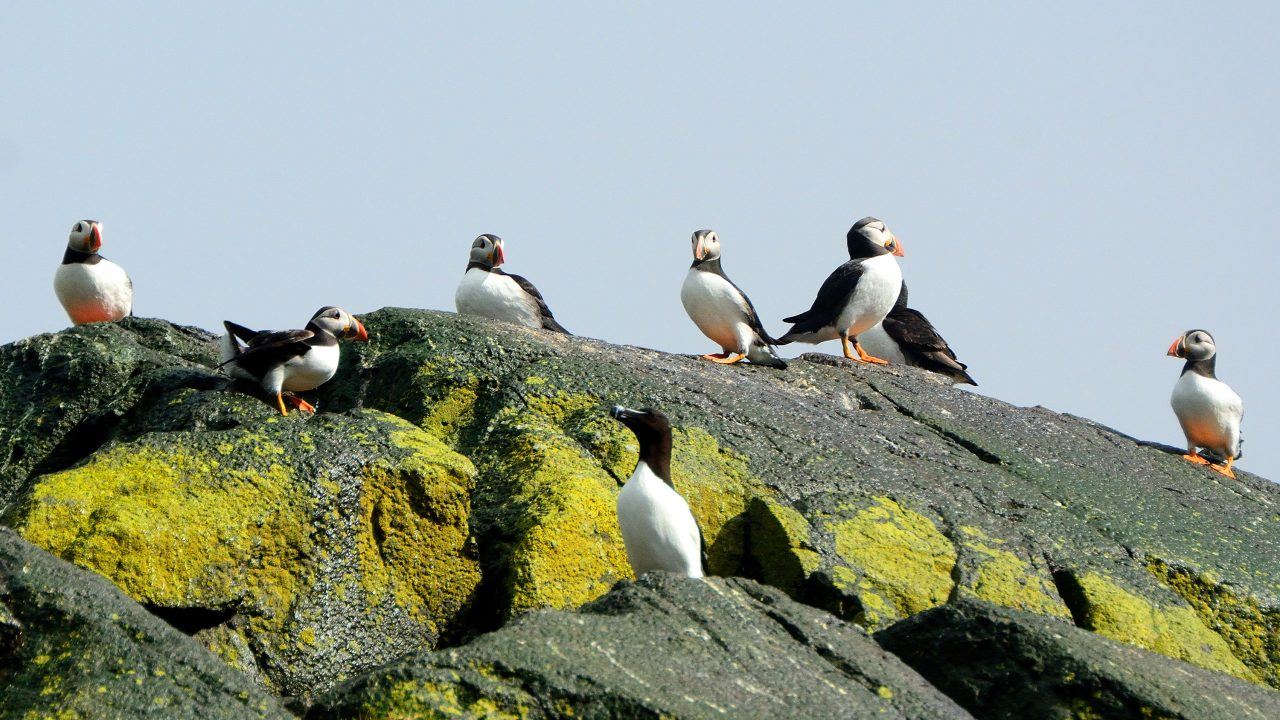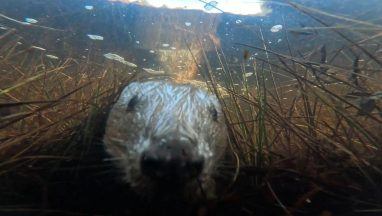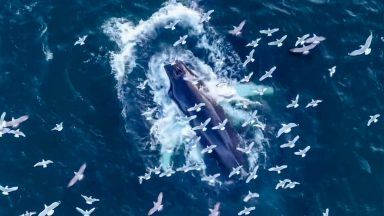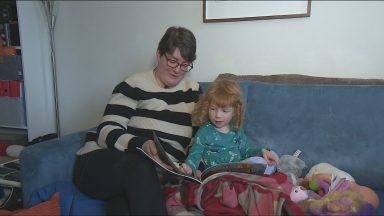Plans for one of the world’s largest offshore wind farms could have a “devastating” impact on seabirds, conservationists warn.
The proposed Berwick Bank development would see up to 307 turbines built in the outer Firth of Forth, about 40km off the Scottish coast and near key seabird colonies like Bass Rock, St Abb’s Head and the Isle of May.
The area is home to a rich variety of species, including puffins, razorbills, guillemots and gannets.
The island of Craigleith, just off North Berwick, has seen a dramatic resurgence in its puffin population after nearly two decades of conservation work.
As part of the Scottish Seabird Centre’s long running SOS Puffin project, more than a thousand volunteers have helped clear invasive tree mallow – a plant which once covered 80% of the land and blocked puffins from nesting in their burrows.
Today, an estimated 5,000 breeding pairs live on Craigleith up from around 1,000 in 2007.
But across the UK, seabird numbers are falling. The latest seabird census found around 70% of Scotland’s seabird species had dropped over a 20-year period, with as many as seven seabird species experiencing declines of over 50%.
Conservationists fear Berwick Bank could threaten puffins and other seabird populations off the east coast.
Fledgling season brings hope – but threats persist
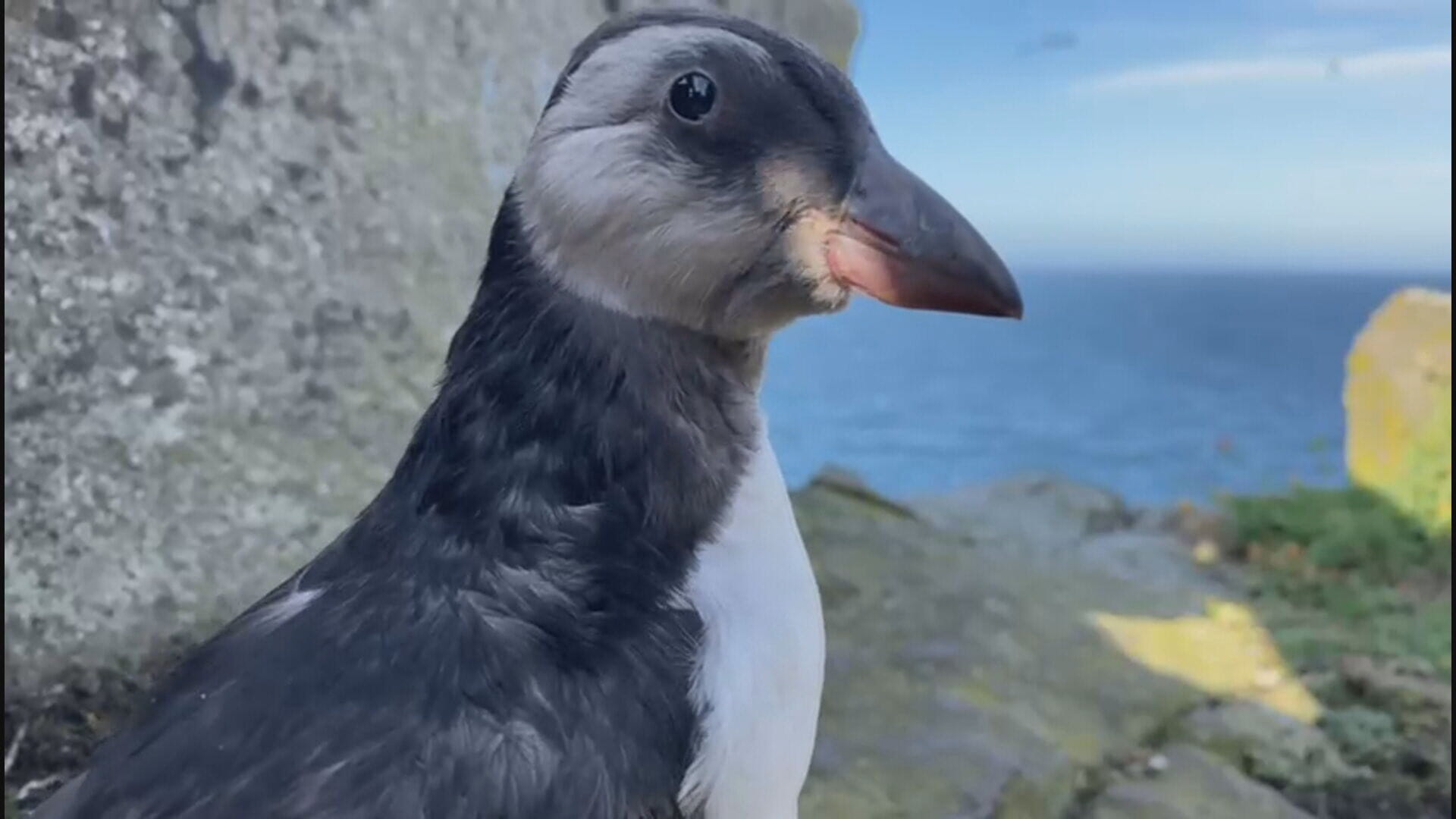 STV News
STV NewsIt’s July in the Firth of Forth – and for Scotland’s young puffins that means it’s time for their first flight.
All they need is a little courage to make the leap.
Senior conservation officer for the Scottish Seabird Centre, Emily Burton, said: “The pufflings, which are the baby puffins, are just starting to get to the point where they’re fledging – so they’re leaving their burrows for the first time.
“Puffins nest underground in burrows, so this will be the first time that those pufflings have seen the sea and been out in the open air – and what they’ll be doing is fledging and heading out into the open water.”
Thanks to the work on Craigleith, many now have that chance.
For nearly two decades, volunteers have worked to cut back tree mallow and restore the island’s habitat.
 STV News
STV News STV News
STV NewsVolunteer John Hunt has organised around 300 work parties since the project’s launch in 2007.
He said: “When we started there weren’t that many puffins nesting, maybe only hundreds. We think there are around 5,000 pairs now nesting. So it’s looking promising for them.
“We’ll have to carry on for a few more years sending out necessary work parties to keep tree mallow at bay.
“The future is hard to predict. But I think we’ve made a huge difference.”
Emily said the long-running effort to remove tree mallow has been vital for the birds’ survival.
“It grows so densely that it outcompetes all native vegetation here and creates an environment that makes it very difficult for puffins to breed successfully.
“Seabirds are facing a lot of different threats – climate change, unsustainable fishing, offshore development and other invasive species.”
Seabirds ‘already struggling’
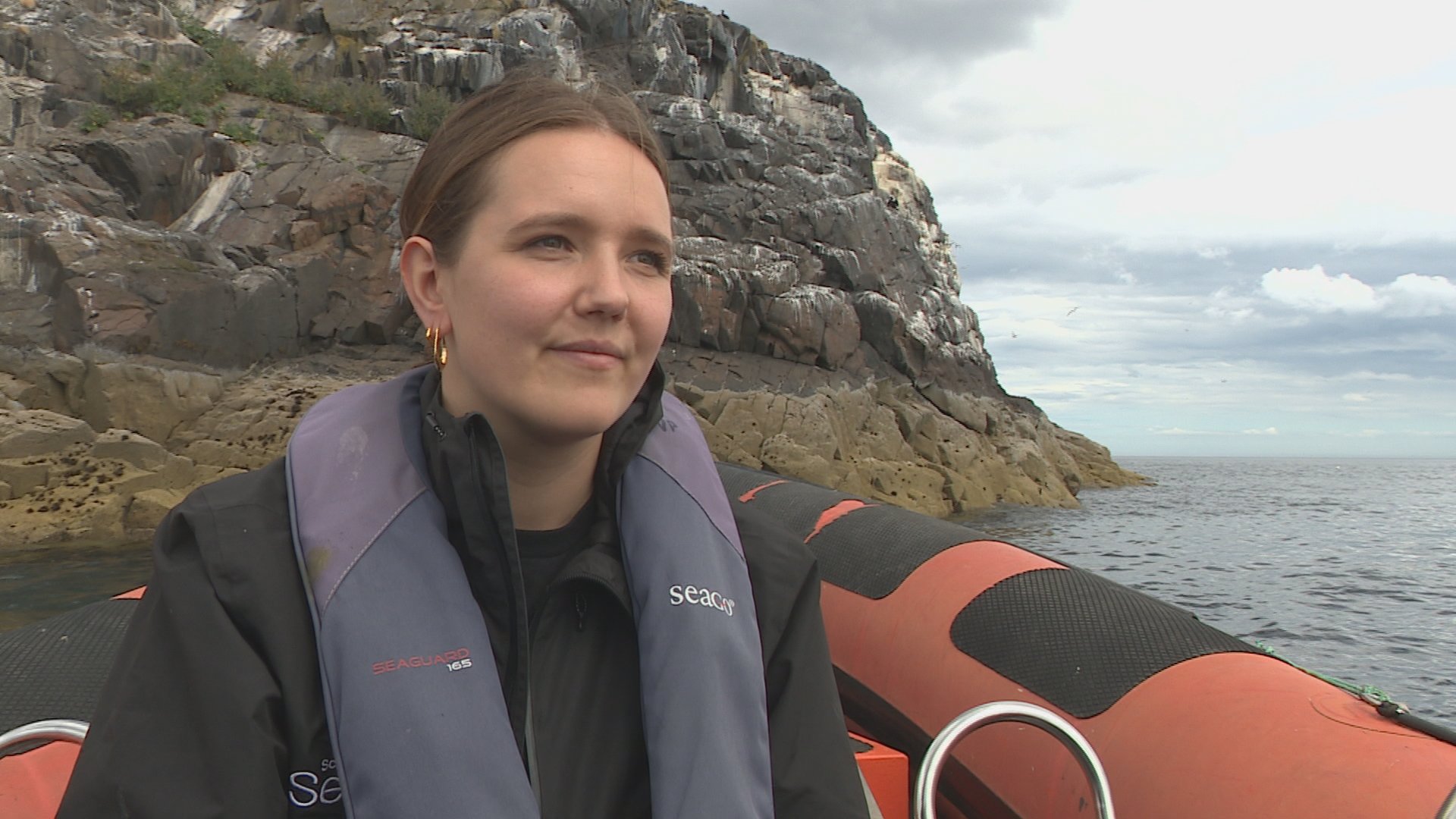 STV News
STV NewsThe looming Berwick Bank project has brought the future of seabirds in the Firth of Forth into sharp focus.
Despite the environmental concerns, energy giant SSE Renewables says the Berwick Bank project is vital for Scotland’s transition to renewable energy. The Scottish Government has yet to decide on the project, nearly two years after SSE submitted its application in late 2022.
The development could generate up to 4.1 gigawatts, enough to power more than six million homes, and the company calls it one of the world’s most significant offshore wind opportunities.
But according to SSE’s own environmental impact assessment, more than 31,000 bird collisions are estimated during its lifespan.
“We’re very worried about the impact it’ll have. These seabirds are already struggling on the islands we look after. They will be flying near the development when they forage and feed.
“We need to look a bit more closely at these issues and work out how we do our very best for our seabirds. It’s very important.”
‘We need renewables – but we also want seabirds to thrive’
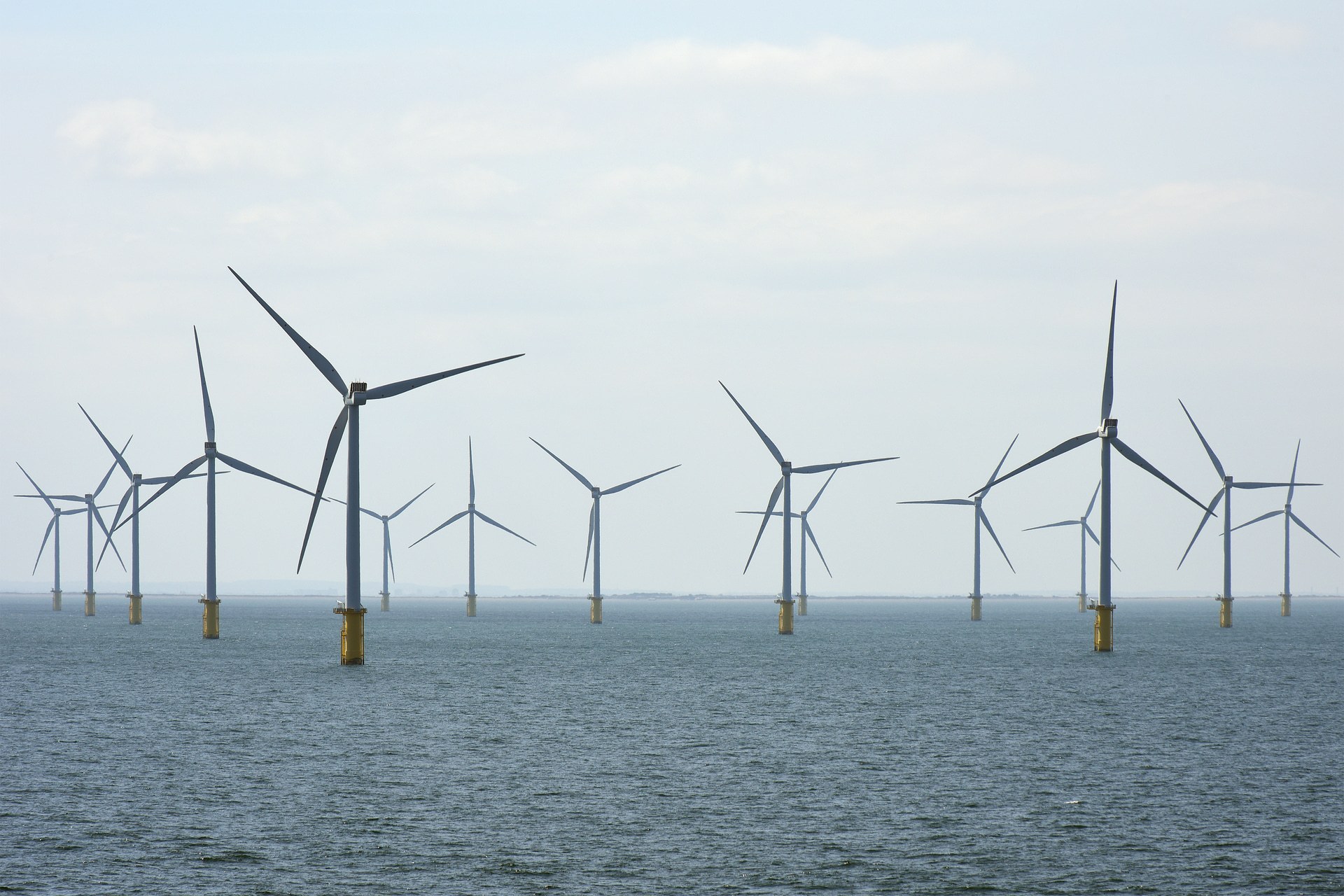 Adobe Stock
Adobe StockRSPB Scotland’s Aedán Smith warned that the proposed development could have a “really devastating” impact on seabirds.
“There’s kind of a scarecrow effect with turbines,” he said. “Birds see something unfamiliar in their environment and avoid that area.
“If it’s a place they depend on for feeding, and they can’t find food elsewhere, they might struggle to feed their chicks or starve themselves.
“A lot of seabirds are already living right on the margins of survival. If they have to fly even a little further, it might push them over the edge.”
Aedán urged that profits from offshore wind projects should be reinvested to protect seabird populations.
“We need to get that balance right in the least damaging way possible,” he said. “We need renewables, but we also want to see our seabirds thrive.
“If the solution to climate change means destroying our natural environment, then it’s no solution at all.
“Some of the biggest investments we’ve ever seen are exploiting nature. We should invest some of that back into Scotland’s natural environment and improving seabird resilience.”
SSE said it has already revised its designs to help minimise potential risks to seabirds.
An SSE spokesperson said: “Reducing our reliance on fossil fuels is critical to ensuring we prevent the worst possible impacts of climate change which, according to the most recent expert assessment, is the biggest single threat to Scottish seabirds.
“Developing a world-leading offshore wind industry, with projects of the scale and ambition of Berwick Bank, is a key part of combating the catastrophic consequences of that.”
A spokesperson for the Scottish Government said: “It would not be appropriate to comment on a live consenting application.”
Follow STV News on WhatsApp
Scan the QR code on your mobile device for all the latest news from around the country


